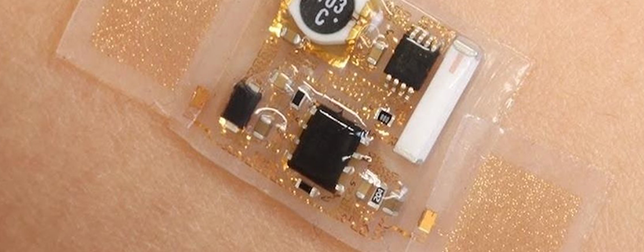With the help of various wearable devices, from fitness trackers to smart clothing, measuring and monitoring vital health signs has become easy. Not too long ago, a visit to the doctor’s chamber for heart checkup used to be an event to watch ECG being printed on a paper. But today, a smartwatch offers a range of health services starting from monitoring steps, Oxygen, calorie intake, sleep, stress, and metabolism-all in real-time.
Wearable medical device makers need adhesives to keep their wearable device stuck to the user without injuring their skin. Spencer, Massachusetts-based Flexcon sees an opportunity in this market.
FLEXcon is a global manufacturer of pressure-sensitive film products for applications that include indoor and outdoor advertising, barcoded labels, product identification and safety/hazard labels, primary labels and bonding/mounting. FLEXcon also develops custom solutions to meet unique converting or application needs. The company has operations throughout North America and Europe, with distribution worldwide.
Read more Innovative Tools and Services for Healthcare
“Flexcon as a company has been focused on the graphics and labels business for 60 years. Now we see a core capability that we have in coating adhesives on films that can be used in a different way,” Shaun McDonough, medical market development specialist at Flexcon, told Medical Design & Outsourcing earlier this year.
Flexcon is endorsing its ISO 10993 and certified Dermaflex product line featuring biocompatible adhesives that are safe for applying on skin. Dermaflex’s potential applications include electrodes, medical tapes, surgical drapes, medical drapes and diagnostic components.
McDonough says that big challenge in adhesives and wearables is that skin is a very tough substrate compared with, for example, a car or a wall.
“Skin is so different,” he says. “It’s ever-changing. It’s continually regenerating, dying, sloughing off, sweating, and having oil coming out of the pores.”
Also, add to the mix the elasticity of skin and the constant movement of the human body.
“If you don’t have not only the right adhesive but also the right film to go with the adhesive, you’re setting up your application for failure,” McDonough said. “You need adhesive and film construction that’s going to match the elasticity of the skin but also robust enough that it’s not going to peel off at the first sign of picking.”
Read more How to Build Magical Devices With Effective Hardware-Software Integration
There’s a fine line between making a lasting bond on the skin and causing skin damage. Picking a conformable and stretchable film raises the odds of the adhesive sticking to the skin.
As type of skin varies from person to person, Flexcon and other adhesive providers test their adhesive’s robustness on stainless steel. While high- and low-density polyethylenes are also used for testing, it doesn’t provide the real-world feel.
“It’s a constant battle within the industry to find the right testing method to reflect the wearability the length of time, the strength of the adhesive on someone’s skin,” McDonough said.













